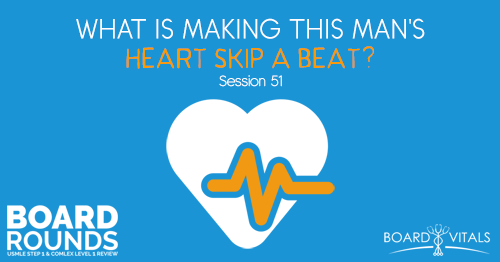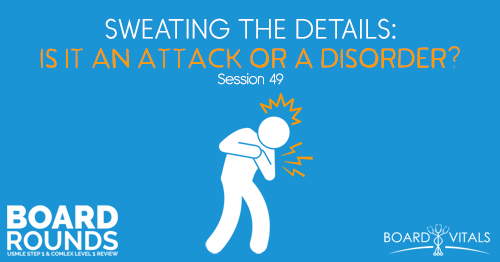Apple Podcasts | Google Podcasts

Session 20
Today, we tackle another maternal-fetal or pregnancy question.
We’re joined once again by Dr. Karen Shackelford from BoardVitals. They offer a comprehensive QBank for Step 1 and Level 1. And even as you continue on your medical school journey, they have QBanks for Shelf exams as well. Use the promo code BOARDROUNDS to save 15% on your purchase. Or text BOARDROUNDS to 44222 and we’ll send you the link and promo code.
[01:58] Question of the Week
A 39-year-old G1P0 presents at 37 weeks of gestation. She has not noticed any fetal movement for the past six hours. The fetal heart rate is 110 and a nonstress test was performed and it’s nonreactive. Which of the following statements is correct?
(A) A fetal heart rate of 110 is abnormal.
(B) Fetal heart rate acceleration results from dopaminergic stimulation.
(C) Fetal hypoxemia usually leads to light decelerations.
(D) Fetal head compression results in reflex flowing of the fetal heart rate.
(E) Usually, a nonstress test leads to a reduction in neurologic injury and fetal death.
[03:10] Thought Process
The correct answer here is correct C. The non-stress test should be reactive and a fetal heart rate of varies a bit. And around 110-160 is normal.
But the non-stress test is the most commonly used method. There’s no evidence, however, that improves fetal outcomes in pregnancy. This is still initiated in women at about 26-28 weeks of gestation.
For fetal hypoxemia and high-risk pregnancies, the older patient is a high-risk pregnancy. It actually starts at the age of 34-35.
A reassuring test doesn’t mean all is well. It only reassures fetal wellbeing in terms of oxygenation.
The fetus moving is characterized by two or more fetal heart rate accelerations. And they peak at least 15 beats per minute above the fetal baseline. This would last at least 15 seconds before returning to baseline. That’s the over 20-minute interval.
A nonreactive nonstress test can reflect fetal hypoxemia or acidosis. It can also be caused by maternal smoking, fetal sleep, fetal immaturity, cardiac anomalies, and sepsis. If the mother is taking on the cardio-acting medication, it will result in changes in the fetal heart rate. But they don’t necessarily indicate fetal problems.
Links:
BoardVitals (Use the promo code BOARDROUNDS to save 15% on your purchase. Or text BOARDROUNDS to 44222 and we’ll send you the link and promo code.
SEARCH SITE
LISTEN FOR FREE











